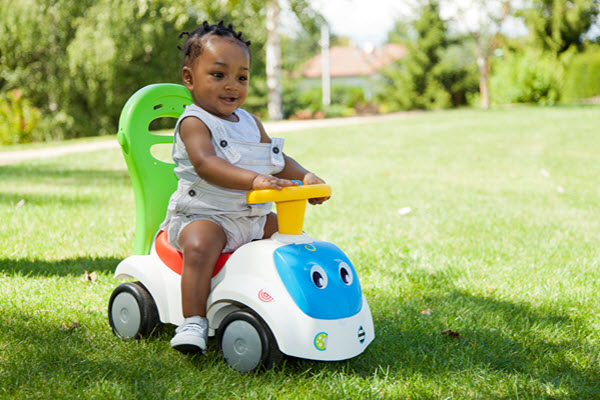
A Guide to Choosing the Right Toy for Your Child’s Age
Choosing the right toy for your child’s age is not just a matter of selecting a toy that will engage, entertain and educate them, it is also a matter of safety. If you’ve browsed the aisles of any toy store lately, you probably know that selecting the right toy can be a difficult undertaking. Not only do you want a toy that you can rest assured will provide no danger to your child, but you also want to select a toy that will help your child develop their full potential.
Research indicates that children provided with age-appropriate toys that are stimulating will help children to develop more fully their physical, cognitive and creative abilities. By learning which toys are right for your child’s age, you can help them to stimulate the connections in their brains that are responsible for building your child’s future intelligence.
Keep in mind that it is never too early to begin this all-important process. Even the youngest babies can begin responding to bright colors, helping their vision to develop more quickly.
Children under Six Months:
- Mobiles in bright colors will stimulate vision
- Activity centers to encourage reaching for motor control development
- Mirrors designed with baby safety in mind to encourage your child to explore faces
- Rattlers and tethers that will introduce baby to new textures.
- Board books-even at this young age reading to your baby will help them with beginning language development
6 to 12 Months
During this period, it is important to begin focusing on interactive play with your child. This includes introducing the concept of cause and effect as well working on eye-hand coordination. Simple games such as “peek-a-boo” and “pat-a-cake” are fun ways to help your baby discover the wonders of their new world. Also, look for these types of toys to further stimulate your child’s development and learning:
- Toys that are musical and make sounds
- Baby gyms and activity courses to stimulate crawling
- Bouncers to stimulate physical activity
- Play telephones to encourage communication through mimicking
- Soft dolls and stuffed animals for kids who love to cuddle
- Wooden and soft blocks for stacking, filling and dumping games
12-18 Months
Around the time, your child turns one he or she may begin to walk or experiment with taking those first steps. Toys at this age should focus on supporting your child’s curiosity in exploration while further developing fine motor coordination.
- Swing sets and safety trikes encourage physical activity and development
- Building blocks for eye-hand coordination
- Nesting cups and shape sorters to improve eye-hand coordination as well as problem-solving skills
- Storybooks/picture books for language and vocabulary development
- Toddler appropriate videos and music
18-24 Months
By the time they are a 1 ½ years old most children begin to use their imagination in play. This typically takes on the form of make-believe; however, in reality this type of play is helping them to develop problem-solving strategies. Look for toys that support this important time of development by expanding their exposure to shapes, colors, and the ability to follow instructions and language. The important key to remember at this age is that kids are truly learning with hands-on play.
- Costumes and dress-up to stimulate imagination
- Push and pull toys that support both children that are beginning to walk as well as advanced walkers
- Puzzles easy to manipulate with a small number of pieces
- Playhouses and other scaled down objects that your child sees every day will give them the opportunity to mimic the world around them.
- Swing sets to develop physical skills
24-36 Months
At age, two children begin to focus on fine motor coordination, even though they do not realize it, of course. By this age, kids can begin working with board games suitable for their age as well as craft type projects and toys. Most children this age are also ready to begin playing with other kids, so you may also wish to look for games and toys that are more structured in nature those previous toys.
- Simple board games and puzzles to encourage further eye-hand coordination and memory development.
- Outdoor equipment such as swing sets, riding vehicles and tricycles to build physical skills
- Beginner musical instruments
- Playhouses
- Sandboxes
- Train sets
- Dolls
- Cars/trucks
- Costumes/dress-up
- Art sets
- Storybooks for language development and vocabulary building
- Videos and music, especially those that expose kids to numbers and the alphabet
By keeping in mind which toys are age-appropriate, you will be in a better position to help support the lightning-fast development of your child’s brain and step up their learning and development.
©Copyright Child Care Owner


Recent Comments